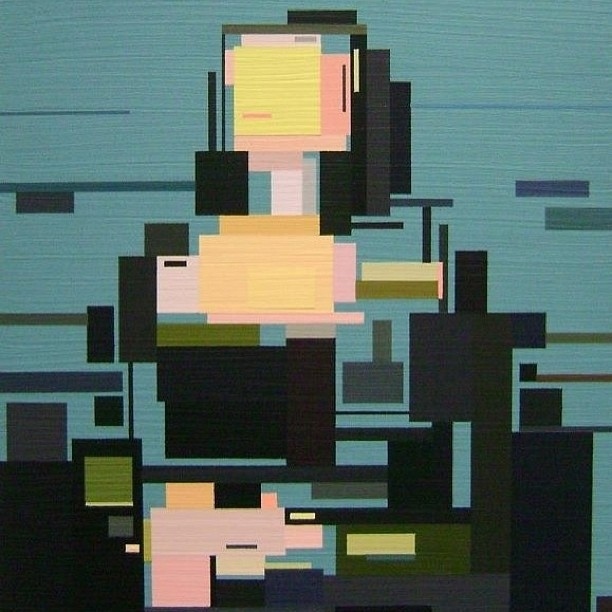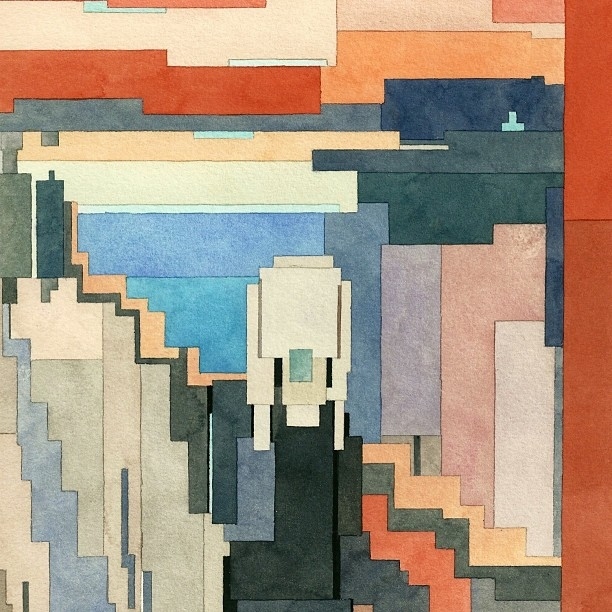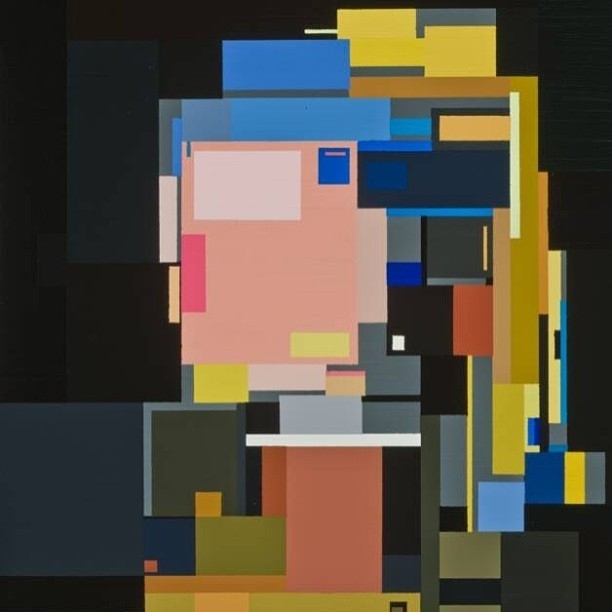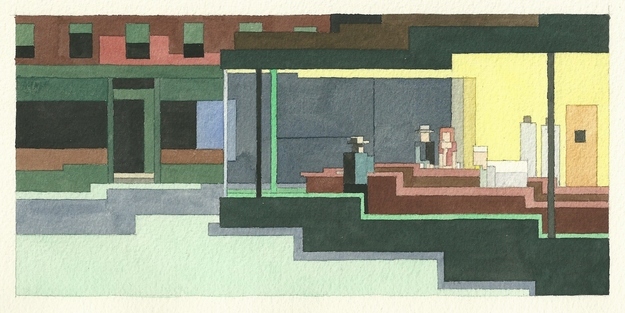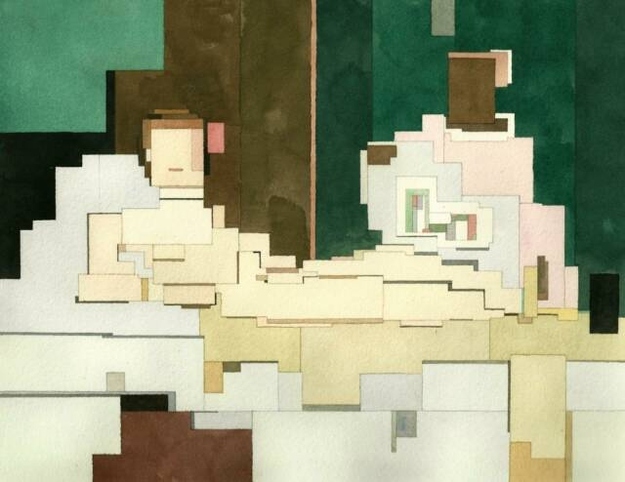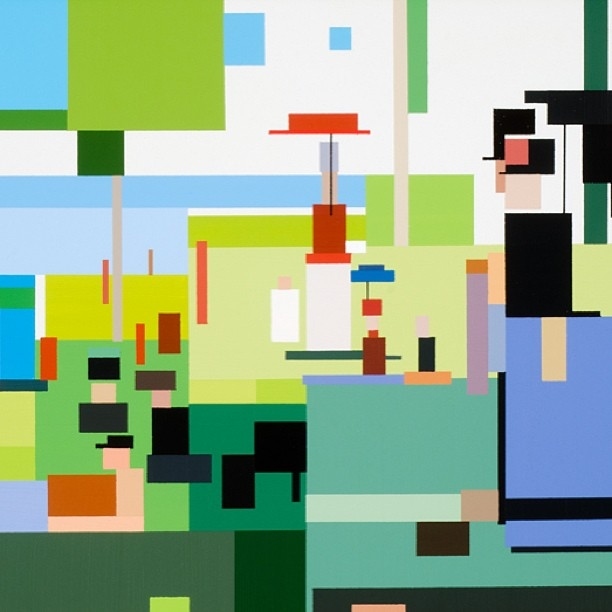While nothing really beats and original Da Vinci or Manet, giving these timeless painting a little bit of modern twist through an 8-bit conversion, wonderfully done by Adam Lister, certainly gives them some youth and Joie de vivre.
Mona Lisa, Leonardo da Vinci
The painting is thought to be of Lisa Gherardini, the wife of Francesco del Giocondo. It was painted between 1503 and 1506, although some think he continued working on it until 1517.
The Scream, Edvard Munch
The inspiration to his painting, according to the artist and his diary: One evening I was walking along a path, the city was on one side and the fjord below. I felt tired and ill. I stopped and looked out over the fjord—the sun was setting, and the clouds turning blood red. I sensed a scream passing through nature; it seemed to me that I heard the scream. I painted this picture, painted the clouds as actual blood. The color shrieked. This became The Scream.
The Girl With the Pearl Earring, Johannes Vermeer
It is sometimes referred to as “the Mona Lisa of the North” or “the Dutch Mona Lisa“, and it is kept n the Mauritshuis gallery in The Hague.
Nighthawks, Edward Hopper
An Oil on canvas painting from 1942, which was sold to the Art Institute of Chicago for $3,000 only months after its completion, remaining there ever since.
American Gothic, Grant Wood
Wood’s inspiration came from what is now known as the American Gothic House, and a decision to paint the house along with “the kind of people I fancied should live in that house.” The figures were modeled by the artist’s sister and their dentist, and the couple are in the traditional roles of men and women, the man’s pitchfork symbolizing hard labor, and the flowers over the woman’s right shoulder suggesting domesticity.
Olympia, Edouard Manet
A very controversial painting at the time (1863), due her confrontational gaze and a number of details identifying her as a demi-mondaine or prostitute.
A Sunday Afternoon on the Island of La Grande Jatte – 1884, Georges-Pierre Seurat
Seurat’s painting was a mirror of Bathers at Asnières, completed shortly before in 1884. While the bathers are doused in light, almost every figure on La Grande Jatte appears to be cast in shadow, either under trees or an umbrella, or from another person. In the painting’s center stands a little girl dressed in white (who is not in a shadow), who stares directly at the viewer of the painting. This may be interpreted as someone who is silently questioning the audience, “what will become of these people, and their class?” Seurat paints their prospects bleakly, cloaked as they are in shadow and suspicion of sin.
For more of some 8-bit awesomeness, check out another artistic take on classic paintings, or these brilliant 8-bit accessories.

